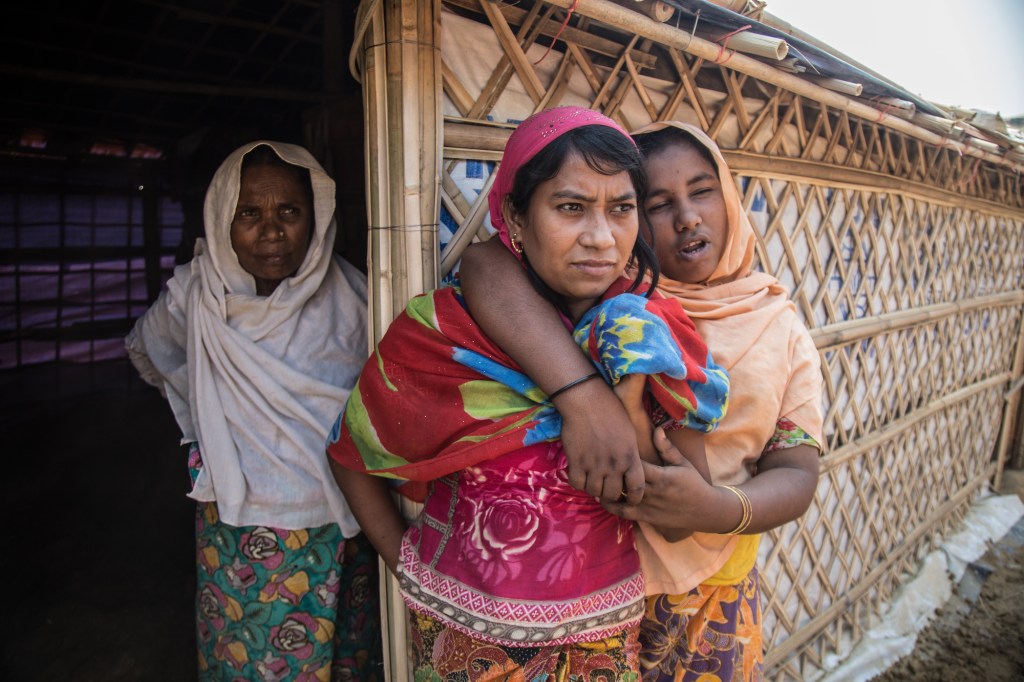In order to reach the rari camp from the center of the larger Balukhali refugee camp, itself an hour’s drive from Bangladesh’s southern city of Cox’s Bazaar, you must climb twenty minutes up through dirt hills. But for the Rohingya women and children who live there, the relative distance from the crowded central camp is a blessing. For them, the mini camp is a sanctuary of sorts. No men are allowed inside.
Rari means “widow” in the language of the Rohingyas—a Muslim minority from the largely Buddhist country of Myanmar that has been victim to an “ethnic cleansing” campaign enacted by the Myanmar government. Most Rohingyas are technically stateless—due to a 1982 law that denies them full citizenship—and have long been persecuted for their religion. But in August 2017, violence escalated at harrowing speeds when national security forces began burning down Rohingya villages, killing and raping Rohingyas, and destroying their land, causing more than 700,000 Rohingyas to flee to neighboring Bangladesh, according to a report from the Human Rights Watch. More than 350 villages were reportedly burned down, and Doctors Without Borders estimates that at least 9,000 Rohingya died in Rakhine State between August 25 and September 24. Other estimates of casualties are much higher.
Videos by VICE
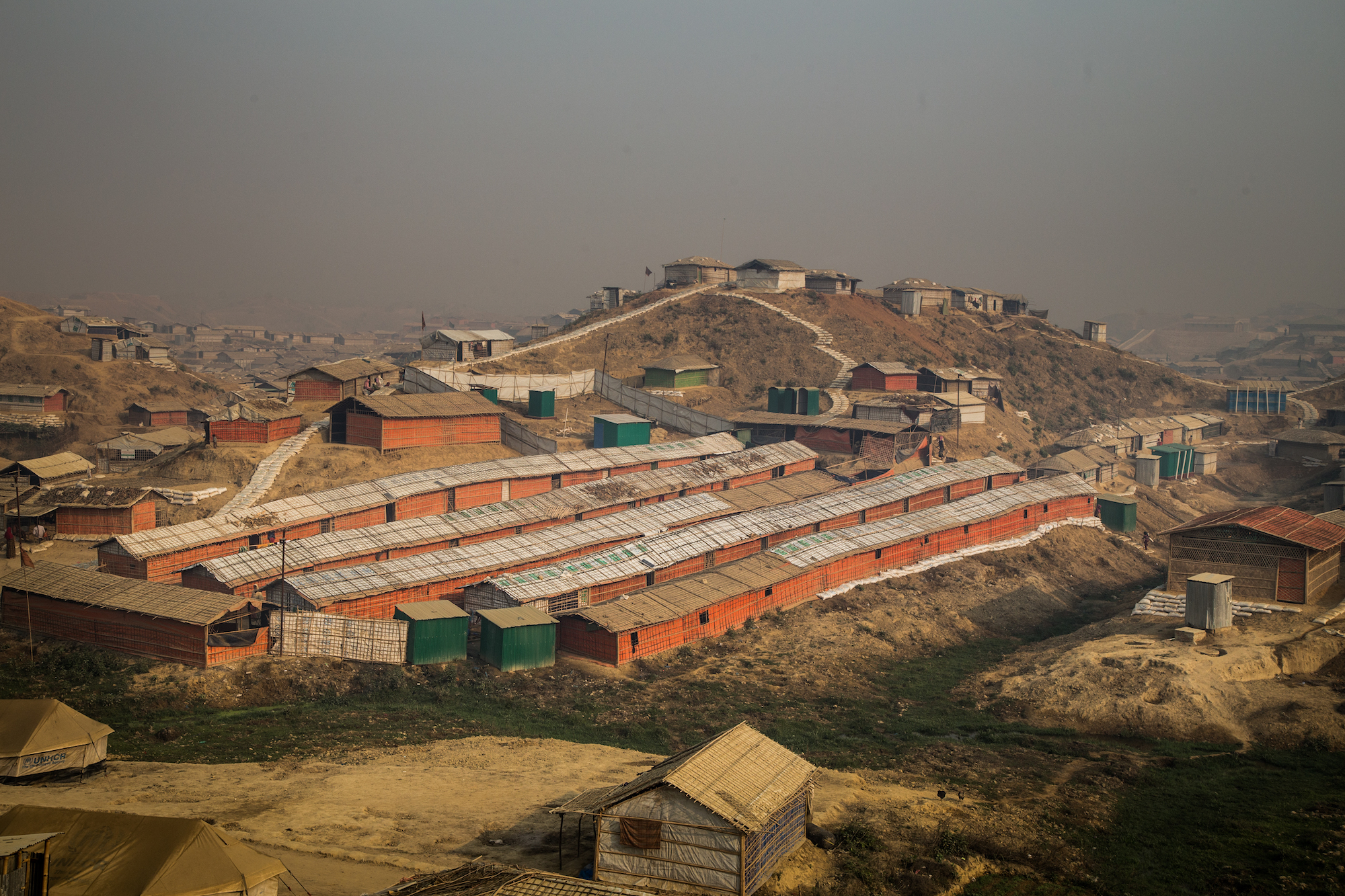
Meanwhile, the Myanmar government officially maintains that the Rohingya people burned down their own villages and migrated out of their own will. The Guardian reports that on August 25, 2017, Rohingya militants attacked and killed Myanmar’s border police, which Myanmar’s deputy minister of information claims helped to provoke the exodus.
After a year-long investigation, a United Nations panel formally accused the Myanmar military of committing genocide against the Rohingyas in an 18-page report based on 875 interviews and verified documents. The New York Times reports that the panel will present its report to the Human Rights Council in Geneva next month. This is the first official step the United Nations has taken to condemn the Myanmar government.
Bangladesh is now a temporary home to approximately 960,000 Rohingya refugees, including those who escaped to Bangladesh during previous bouts of violence in 1992, 2012, and 2016. CARE International estimates that 80 percent of this population is made up of women and children, and the UN estimates that 16 percent of Rohingyas are single mothers, many having lost their husbands to violence in Myanmar or while migrating.
The enormous influx of refugees in 2017 was “one of the most rapid mass exoduses in modern history” according to The New York Times. Over the past year, Rohingyas have erected shelters for over 205,000 households in every available corner of the hilly terrain that makes up the area around Bangladesh’s southernmost city of Cox’s Bazar. There are two official camps—Kutupalong and Balukhali—but 21 extension camps have been built by Rohingyas supplied with tarps and bamboo by aid groups.
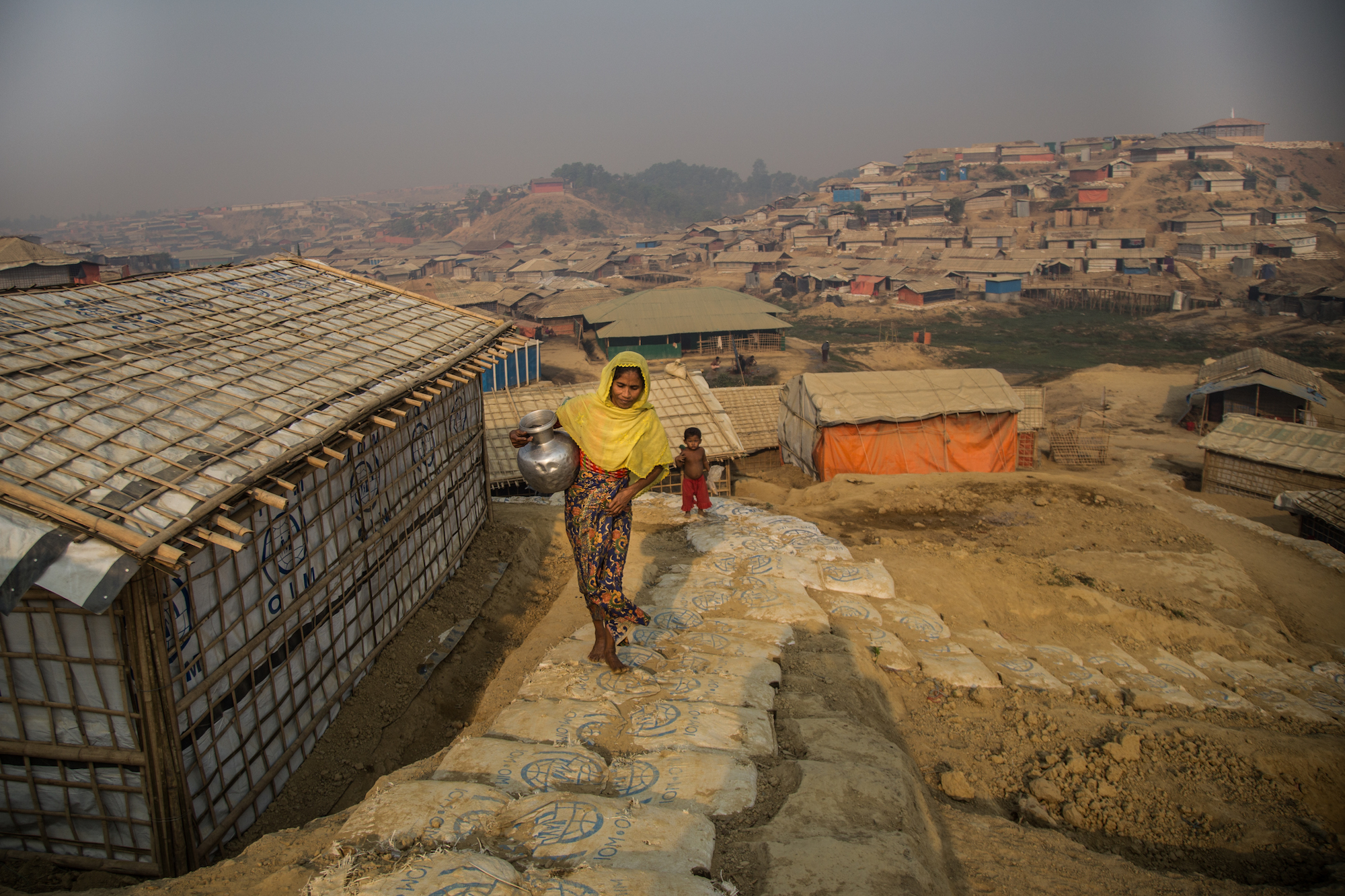
Within sprawling Balukhali, the rari camp stands apart just slightly and is a safe haven for young widows and girls who have been hit the hardest in the crisis. Having lost male protection in the form of fathers and husbands, they are vulnerable to sexual violence and sex trafficking.
Residents of the camp say that it was built with funding and instructions from private donors hailing from Muslim-majority Pakistan a few months after the August 2017 influx. Reuters reports that the Balukhali widows camp is the biggest of three such mini camps spread out among the camps, and that the two stipulations the donors imposed were that the inhabitants be devout Muslims and chosen from the most vulnerable and needy among the refugee population.
The camp, which houses around 200 widows and orphans, is made up of a neat row of huts built close together to keep intruders out. Inside each shelter, the dirt floors are swept free of debris, while clothing, stools, and straw mats are neatly folded up or placed decoratively along the walls. Unlike other sections of Balukhali, the entrance to this sub-camp remains padlocked and guarded. Mohammad Salim, the rari camp’s majhi—an informally elected community leader responsible for running “blocks” of the camp—does the guarding. At night, male volunteers join him to guard the perimeter.
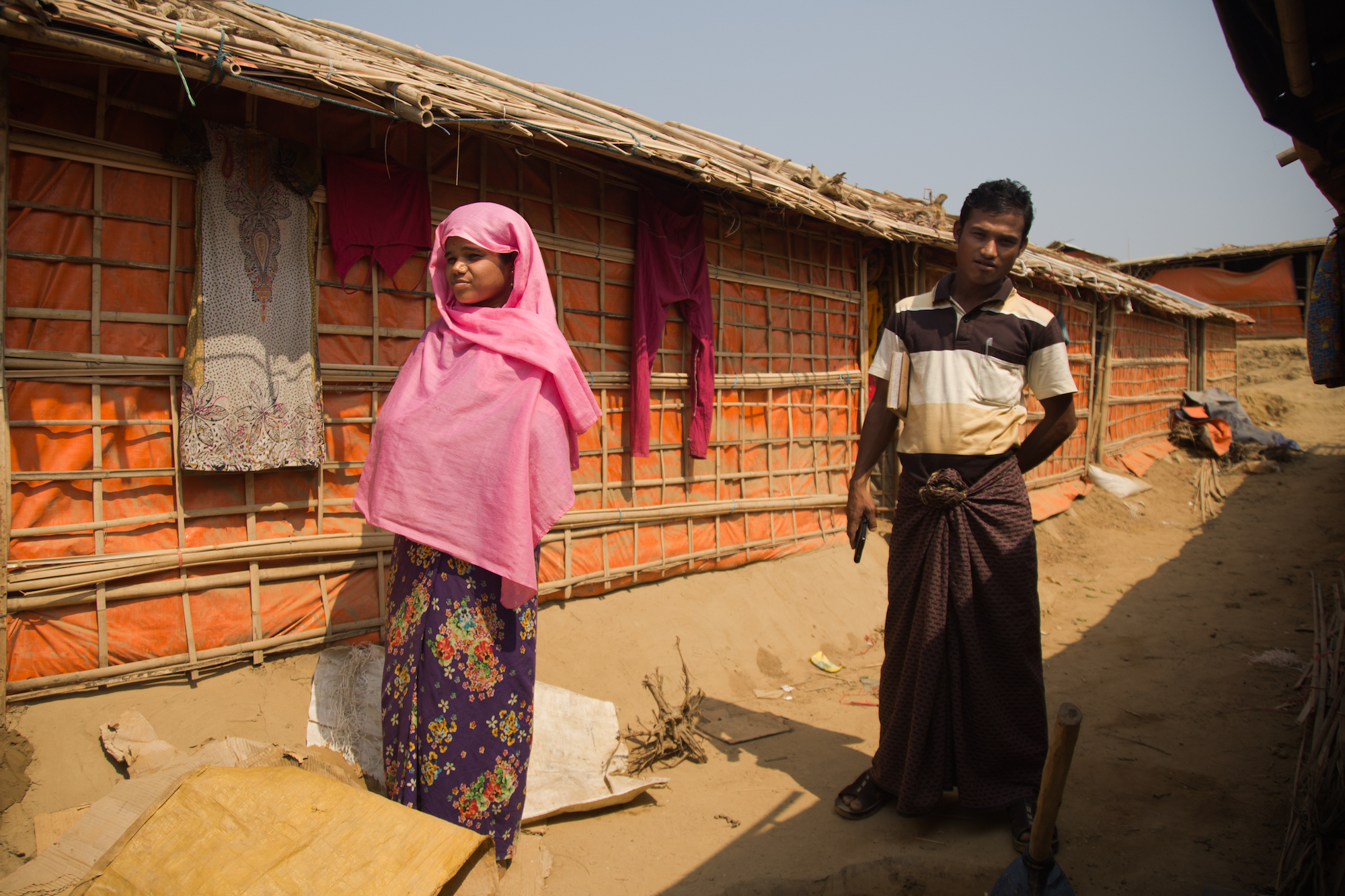
“Majhi Salim makes sure they protect us,” says 25-year-old inhabitant Amena Begum.
In a 2018 survey conducted by the United Nations Office for the Coordination of Humanitarian Affairs (OCHA), 77 percent of Rohingya women and girls living in refugee camps across Cox’s Bazar reported feeling unsafe. As the report notes: “Hundreds of incidents of gender-based violence continue to be reported weekly […] Lack of income generating opportunities and transferable skill development has catalysed the exploitation of adolescent girls and women in the form of forced marriage, survival sex, trafficking for commercial sexual exploitation, drug smuggling and forced labor.”
Several refugee girls tell me they try to avoid coming out in the daytime to complete everyday tasks, such as picking up aid supplies or fetching water, out of fear of sexual harassment—or worse. At night, when the camps are mostly unlit and the number of policemen dwindle, they’re especially afraid to leave their shelters.
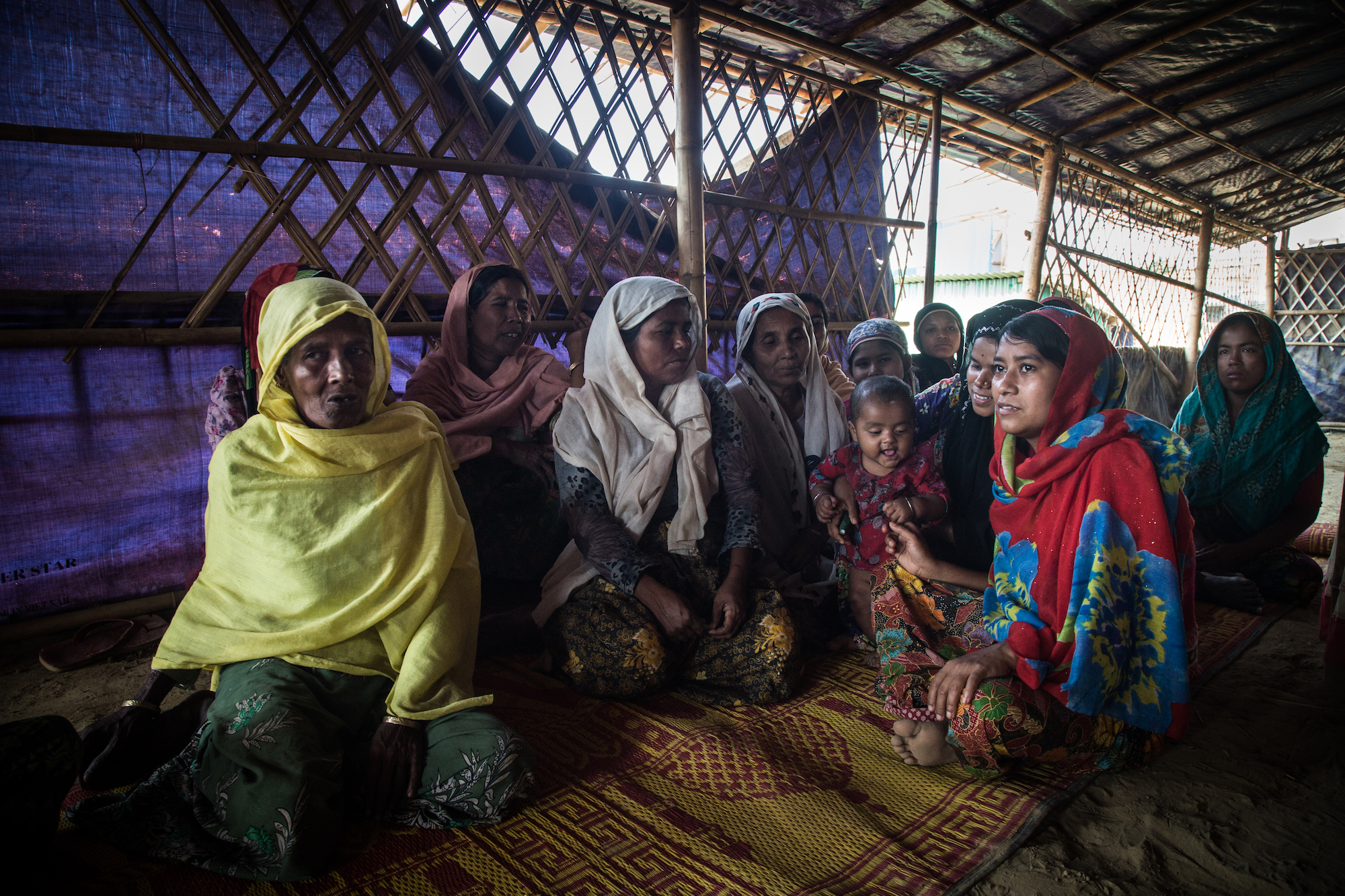
The latrines, too, pose a safety issue: In a recent survey by Oxfam International, more than one third of Rohingya refugee women said they did not feel safe using the camps’ latrines and shower cubicles, which do not have roofs or lockable doors. The latrines are shared by all genders in the camps. Several girls in the camps say they choose to limit their latrine use to just once or twice a day to minimize the risk of bumping into men that lurk in front of the public bathrooms. Without opportunities for employment in the camps, many restless young men pass time by preying on girls and women, they add.
By being set apart, including its own bathroom area, the rari camp offers a bit of respite from these constant threats.
Amena arrived at the rari camp in September 2017 with her three children after violence erupted in her former village in the Rakhine State town of Buthidaung. “When the Burmese army was shooting at people in the village, my husband got killed in the cross-fire,” she recalls. “I didn’t see him die, but when the shooting stopped, I waited for him all night and he never came back home.”
Amena says she joined a group of neighboring families and ran to the forest with her children. It took them nearly ten days to get to Bangladesh, she recalls, as her and her children took shelter in the forest for days at a time to make sure Burmese militants weren’t following them. They subsisted on whatever they could find in the forest. Under normal circumstances, it would’ve taken less than a single day to cross the border.
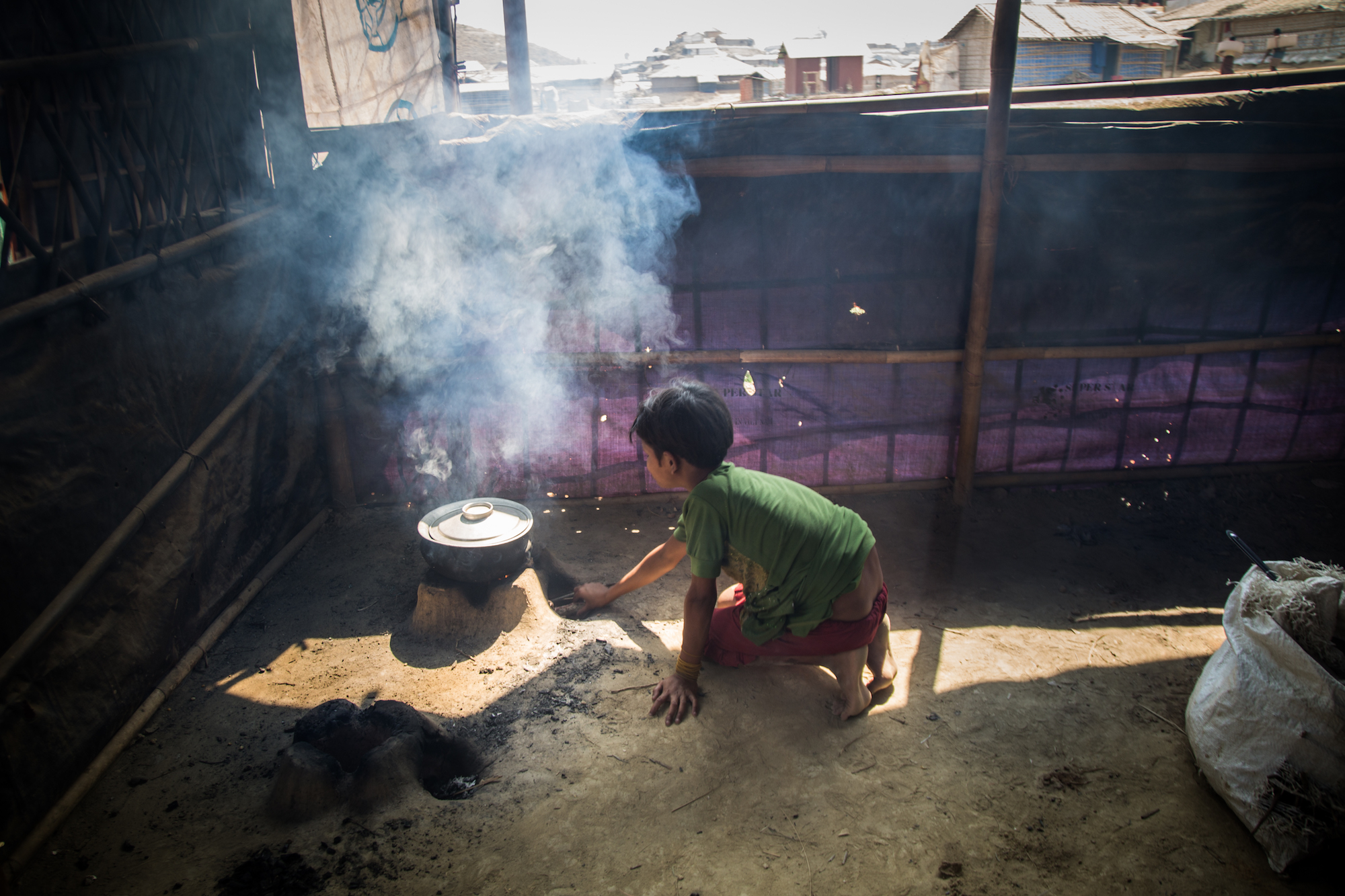
“When my kids would cry from hunger, I would console them by saying, ‘We’re almost in Bangladesh,’” says Amena, stirring a pot of boiling rice in the rari camp’s communal kitchen. “We’ll get food there. They’ll take care of us.”
Amena feels safe inside this camp. Even when her and other widows don their burqa and go down to the camp’s center to get aid, she says men stay away because being part of the widows camp grants them a protected status. And if an incident occurs outside of the rari camp—for instance, if the young girls who often go to fetch aid and supplies get harassed by men—the women report it to Suhara Begum.
Although majhi titles are technically only assigned to men, Suhara functions as the unofficial female majhi of the widows camp. The inhabitants communicate all their needs to her, and she works with Salim to solve issues and manage day-to-day affairs. “The Pakistani [donors] noticed that I was well versed in religious instruction,” says Suhara. “So they assumed that I could be a good leader to the women here.” Her voice is raspy and mature, but her fresh-from-adolescence skin belies her mere 20 years of age.
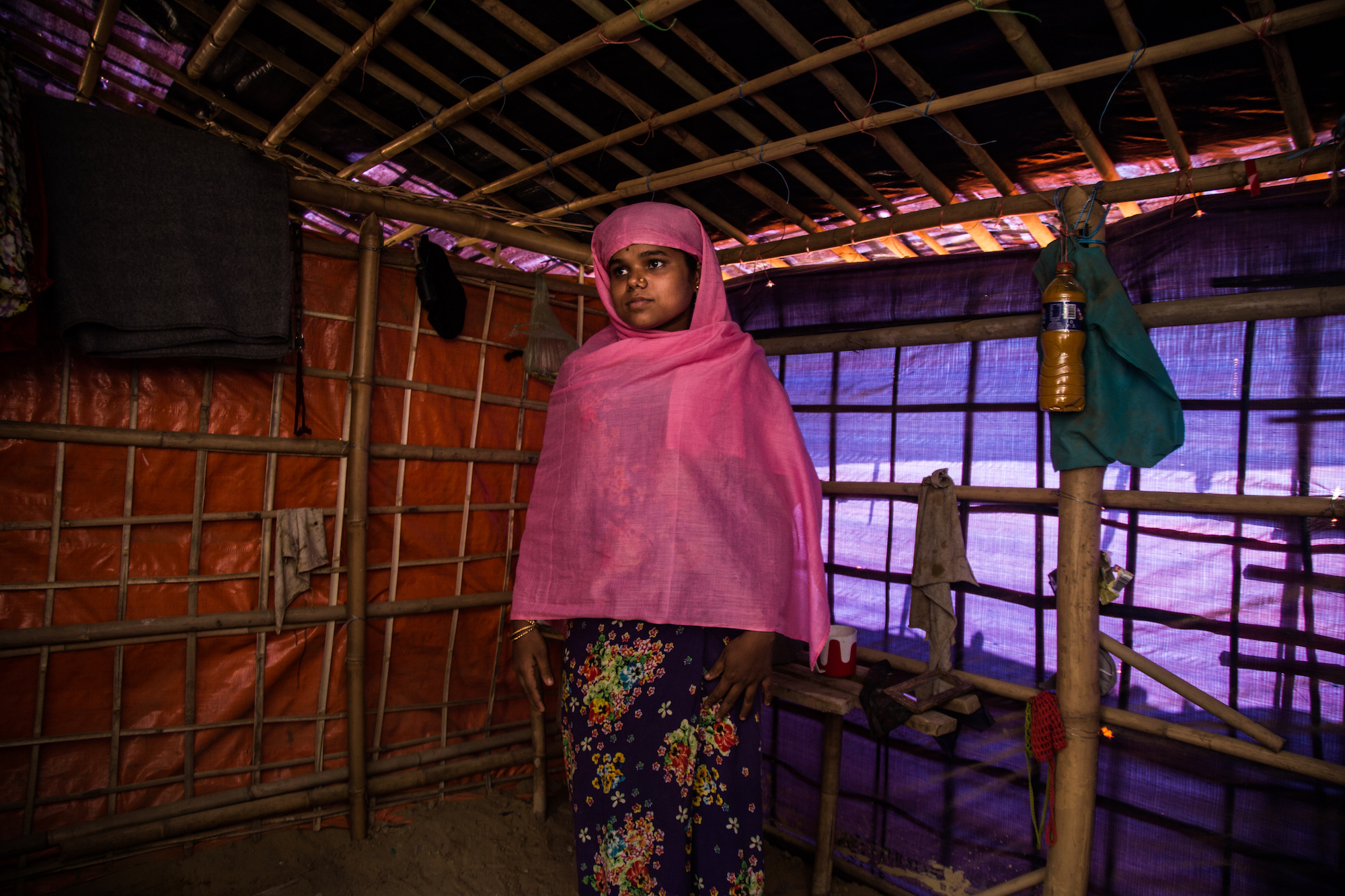
Hailing from a family of Islamic clerics, Suhara gave talim (sermons) to women in her village in Myanmar, she says. She continues that practice in Bangladesh to cope with the loss of her family, including her newlywed husband of just three months. Suhara says the donors put her in charge of making sure all the members of the widows camp devote themselves to prayer. She preaches to inhabitants of the camp every jummah, or Friday prayer.
The exact identities of the rari camp’s donors are unknown. UN Secretary-General António Guterres says that out of the $950 million in international aid UN agencies have appealed for, only 26 percent has been fulfilled. Private donations, however, are on the rise.
“A lot of groups come, donate money, and never come back,” says Assistant Secretary of the Ministry of Land Shamimul Huq Pavel. “We try to keep track of who is coming in and out of the camps, but sometimes rogue groups slip through. This seems like one of those cases.”
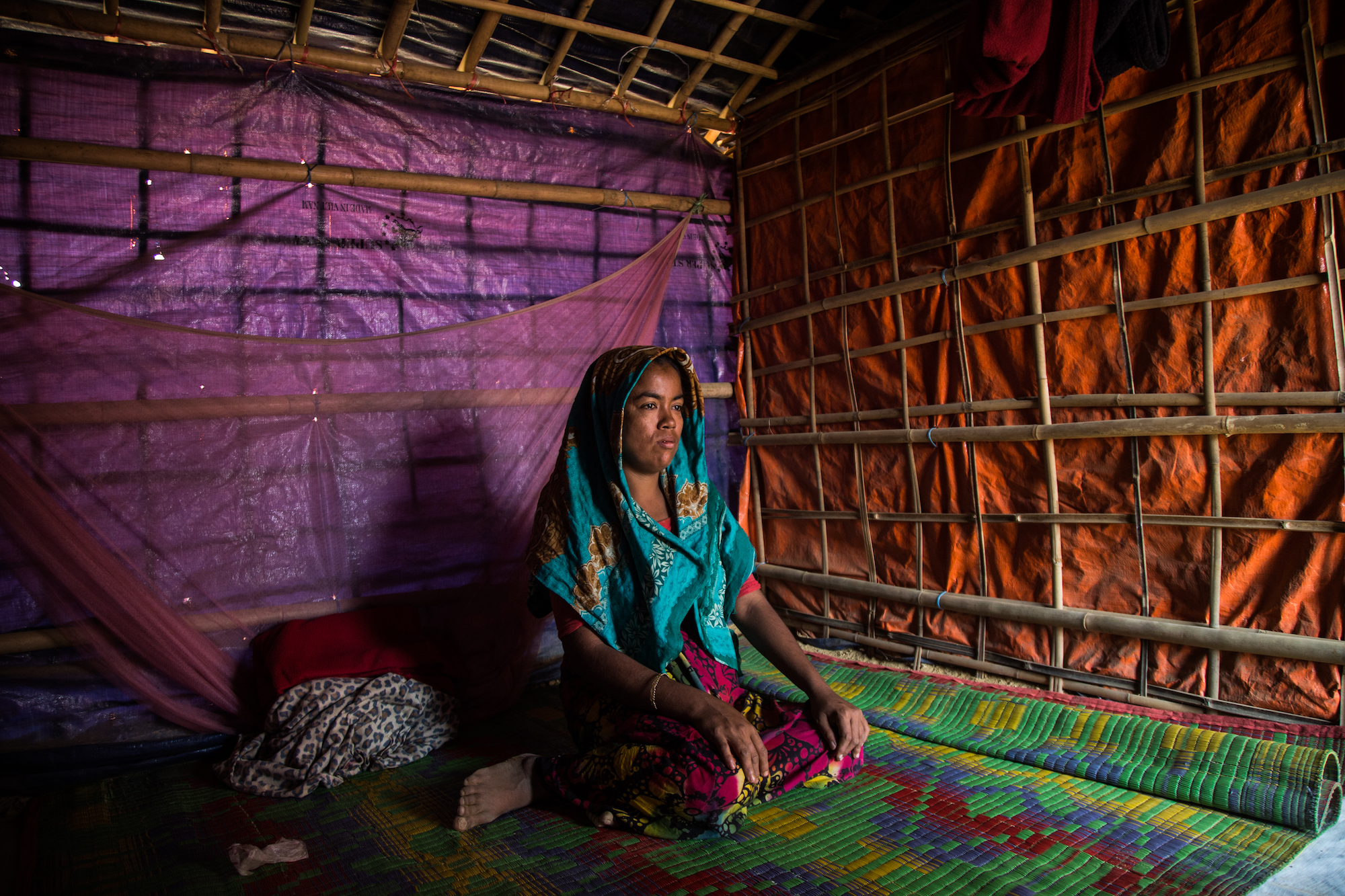
Suhara, Amena, and other women in the rari camp say they spend their days praying, talking, mending each other’s clothes, sharing recipes from the limited range of food aid they receive, and reminiscing about their lush, fertile farmlands—the range of vegetables and meat they cultivated and grew; the spices and curries they can no longer cook while living off rations. Their world is small and limited, but safe compared to the horrifying experiences they’re trying to leave behind them—homes and properties burned to the ground, husbands and male relatives hacked to death by the Myanmar military, women and girls sexually tortured.
According to Human Rights Watch, several factors, including deep stigma, keep Rohingya women from reporting rape. Still, a report by the organization that includes interviews with 29 Rohingya women who say they were raped by Myanmar security forces, calls sexual assault against Rohingya women “widespread.” Doctors Without Borders has reported that it treated 224 victims of sexual violence between August 2017 and March 2018, but acknowledges that most women do not seek help.
Tahera is among those Rohingya rape survivors. Sitting next to Suhara, the thirty-year-old mute and deaf woman shares her story through sign language, which Suhara translates. She says she lived on the main road in the same Rakhine State village Suhara comes from. When security forces arrived in August 2017, they targeted roadside houses first. Several officers dragged Tahera from her home and locked her in a shack for a month, where she was repeatedly raped.
She says she was only untied for feedings.
One day, the soldiers let her go, without explanation or any clothing. Tahera traveled alone for a few hours until she met some people from her village that were fleeing to Bangladesh. They gave her food and clothes and brought her with them.
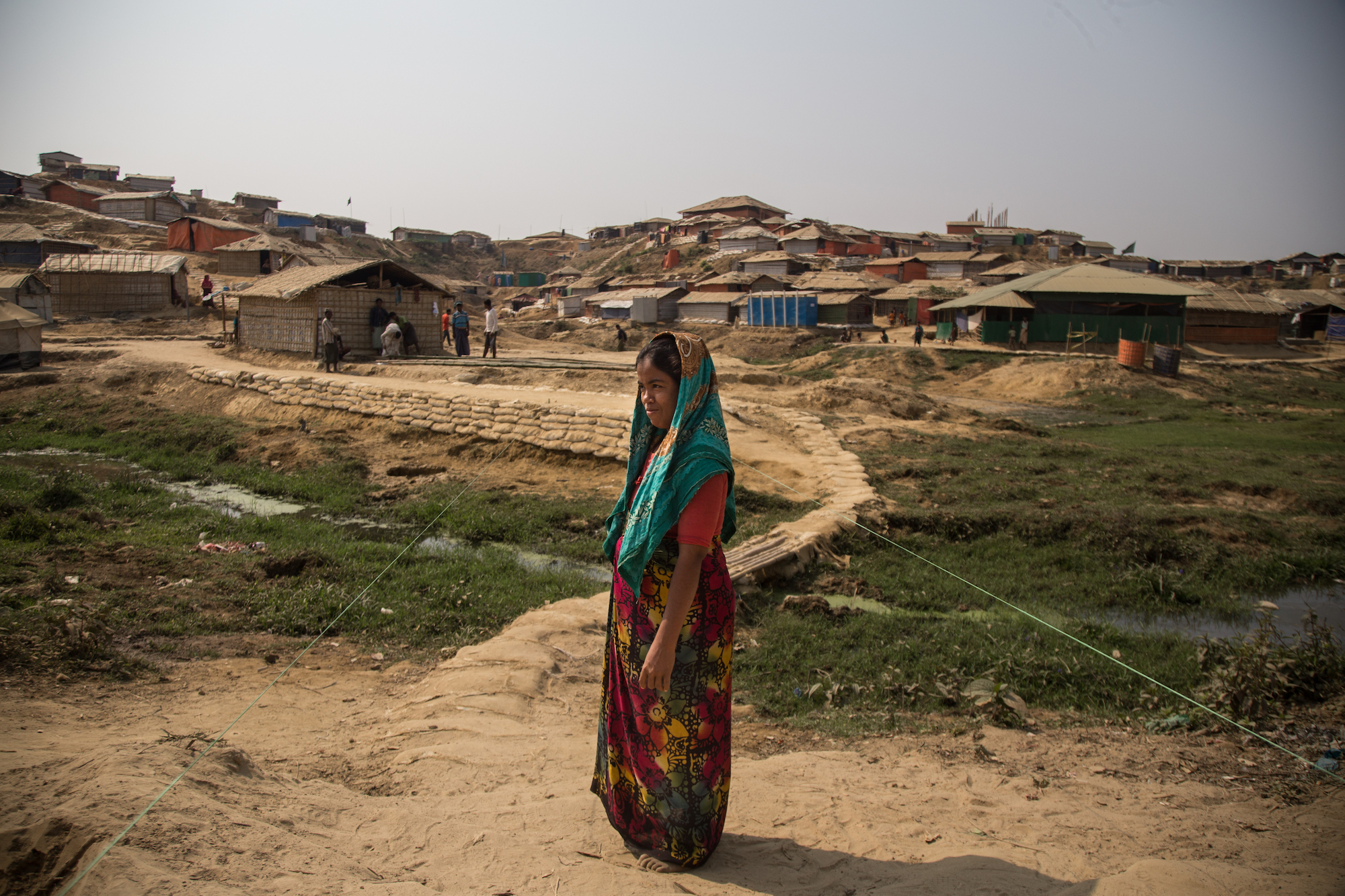
She still has nightmares about the militants, Tahera signs, but Allah has kept her going. She takes solace in Islam and Suhara’s weekly sermons.
Grasping Suhara and Amena’s hands, Tahera gestures that she is happy that she doesn’t have to engage with men. Men terrify her, she indicates. She is content to be around her sisters.
For More Stories Like This, Sign Up for Our Newsletter
On June 6, the UN signed a secret Rohingya repatriation deal with Myanmar. After it leaked online, Rohingya advocates vehemently opposed its terms. They say the deal doesn’t address citizenship or clearly define where exactly the Rohingya would live, now that their land is destroyed. Rohingya advocates fear they’d be placed in camps in Myanmar with worse conditions than the refugee camps in Bangladesh.
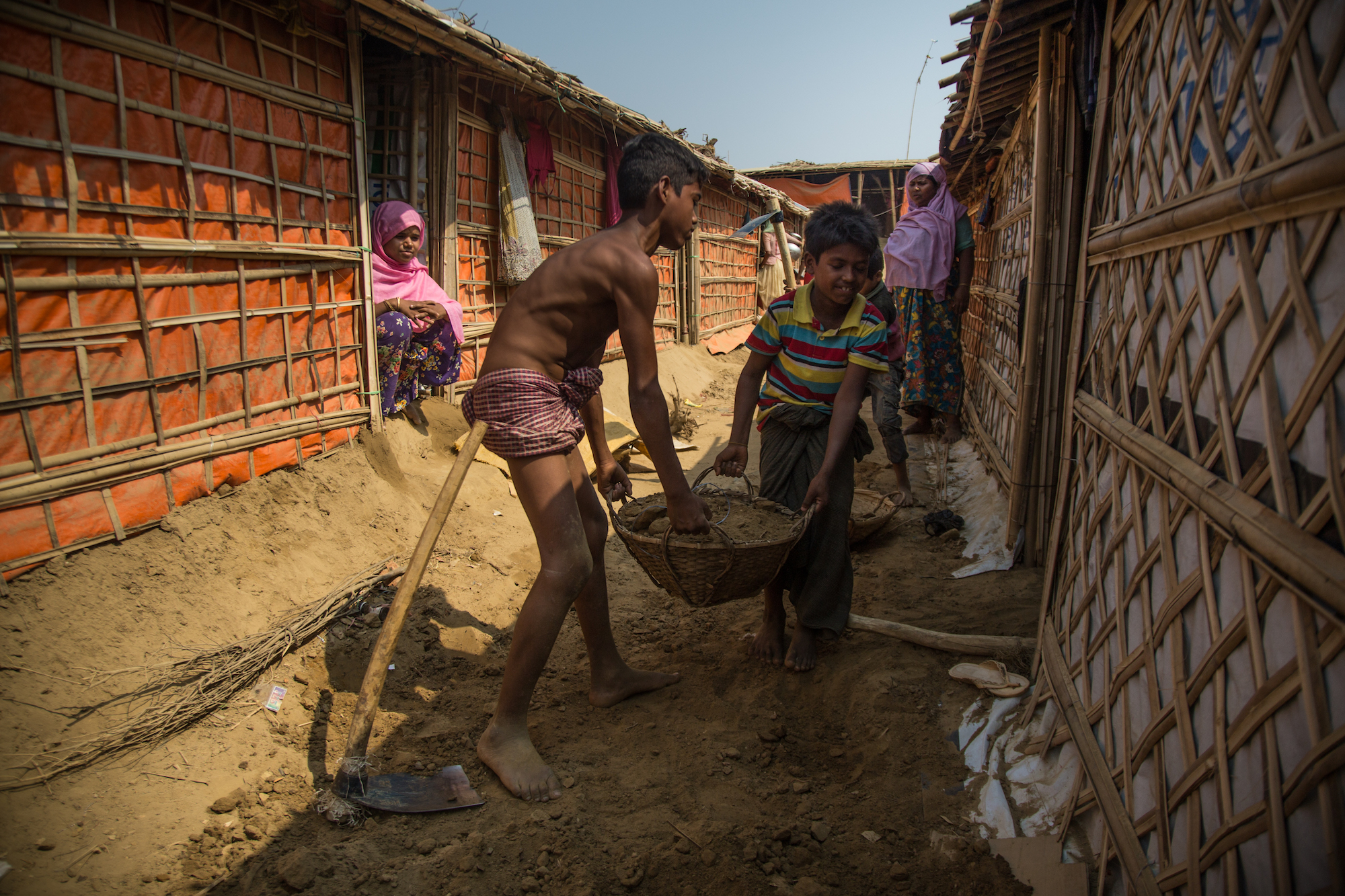
Nearly one year after leaving Myanmar, Tahera, Suhara, and Amena aren’t keen to return.
“If they can give us back our homes and allow us to practice our religion in peace, I would gladly go back,” says Suhara. “It’s the land of my ancestors. But until then, we are grateful to Bangladesh for letting us, especially us widows, live in peace.”
